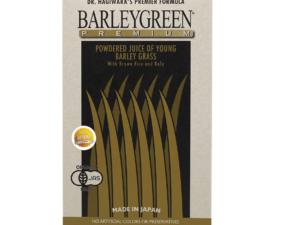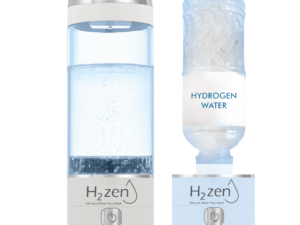Did you know that simple dietary changes can reduce harmful cholesterol by up to 15%? The Wellness Group helps Malaysians discover science-backed nutrition strategies for better heart health.
Certain foods work like natural regulators, gently improving blood lipid profiles. Oats, beans, and fruits contain special compounds that bind to cholesterol during digestion.
The Wellness Group offers personalized advice through WhatsApp at +60123822655. Their nutrition experts are available Monday-Friday 9:30am-6:30pm and weekends 10am-5pm.
This guide explores how specific food components interact with the body’s systems. Readers will learn about soluble fibers, beneficial fats, and practical meal planning approaches.
Key Takeaways
- Dietary adjustments can significantly impact cholesterol levels
- Soluble fibers in oats and fruits help remove excess cholesterol
- Professional guidance is available through extended business hours
- Combining nutrition with lifestyle changes yields best results
- Certain plant compounds actively support cardiovascular wellness

Click to 了解更多
For those seeking comprehensive approaches, explore our daily detox supplement for cholesterol that complements dietary changes.
How Soluble Fiber Helps Lower LDL Cholesterol
Modern research uncovers fascinating mechanisms behind food-based cholesterol regulation. Specific nutrients interact with digestion in ways that support healthier blood lipid profiles.
The Science Behind Nutritional Cholesterol Control
Soluble fiber transforms during digestion, creating a gel-like matrix. This viscous substance traps cholesterol molecules, preventing their absorption into the body.
Studies show this process disrupts enterohepatic circulation. Bile acids containing cholesterol get excreted rather than recycled, forcing the liver to use existing reserves.
The Gut's Role in Cholesterol Management
When gut bacteria ferment soluble fiber, they produce short-chain fatty acids. These compounds signal the liver to reduce cholesterol production naturally.
A 2022 clinical trial demonstrated significant results. Participants consuming 3g of oat beta-glucan daily saw measurable improvements in cholesterol levels within eight weeks.
The fermentation process also enhances cholesterol excretion. This dual-action approach makes soluble fiber particularly effective for maintaining balanced blood lipids.
FDA-approved research confirms that regular intake can support cardiovascular wellness. Including these nutrients in daily meals creates sustainable benefits for lower cholesterol maintenance.
Top Fiber-Rich Foods to Lower Cholesterol Naturally
Nature provides powerful solutions for maintaining healthy cholesterol levels. Packed with soluble fiber and heart-friendly nutrients, certain foods work like natural scrubbers for your arteries.

Oats: The Cholesterol-Fighting Powerhouse
A bowl of oats delivers 3g of beta-glucan, the FDA-recommended daily amount for heart health. Studies show 70g daily reduces LDL in Asian Indians by 5–10% within weeks.
Try steel-cut oats in bubur or overnight recipes to preserve fiber. Avoid instant varieties with added sugars.
Legumes: A Double Dose of Fiber and Protein
Black beans (6.9g fiber/100g) and chickpeas (6.4g) are stellar choices. A month-long study found 1 cup daily lowered LDL by 8%.
Pro tip: Soak dried legumes overnight to reduce cooking time while retaining nutrients.
Apples and Avocados: Delicious Ways to Fight Cholesterol
Apples pack pectin, a soluble fiber that binds cholesterol. Avocados combine fruits’ fiber with monounsaturated fats for double benefits.

Click to 了解更多
Skip juices—whole fruits retain 100% of their fiber. Add flaxseed to smoothies for an extra boost.
Steam vegetables like artichokes to preserve fiber. Small tweaks to your diet can yield big heart health rewards.
Best Fiber for Lowering LDL Cholesterol: A Detailed Look
Not all dietary fibers work the same way when managing heart health. Some form gels during digestion, trapping cholesterol, while others pass through unchanged. Understanding these differences helps optimize meals for better results.
Comparing Fiber Types
Beta-glucan, found in oats, is highly viscous and binds cholesterol effectively. Pectin, from apples, works slower but supports gut health. Both are valuable, but beta-glucan shows faster lipid improvements.
| Fiber Type | Effectiveness | Best Sources |
|---|---|---|
| Beta-glucan | Reduces LDL by 5–10% in 8 weeks | Oats, barley |
| Pectin | Moderate reduction, boosts gut flora | Apples, citrus fruits |
Supplements vs. Whole Foods
Fiber supplements like psyllium enhance statin effects, but whole grains offer nutrients. Ground flaxseed improves ALA absorption, making it a versatile choice.
- Psyllium: Best for quick results; mix with water.
- Inulin: Gentle on digestion, found in chicory root.
- Wheat bran: High in insoluble fiber; less effective for cholesterol.
Malaysian staples like kacang hijau (mung beans) and barli (barley) are affordable sources. The Wellness Group provides personalized advice via WhatsApp for tailored plans.
Avoid processed “high-fiber” snacks—they often contain added sugars. Whole foods deliver better results without hidden drawbacks.
How Much Fiber Do You Need Daily?
Daily fiber targets vary by gender and health goals. Meeting these needs supports digestion and heart wellness. Small changes can make a big difference over time.
Gender-Specific Recommendations
Men should aim for 31–34 grams per day, while women need 25–28 grams. These amounts help maintain energy and manage cholesterol.
Malaysian portion equivalents:
- 1 cup cooked oats: 4g fiber
- ½ cup kacang merah (red beans): 7g
- 1 medium guava: 5g
The Right Fiber Balance
A 3:1 ratio of insoluble to soluble fiber works best. Insoluble types aid digestion, while soluble types target cholesterol.
| Malaysian Dish | Soluble Fiber (g) | Insoluble Fiber (g) |
|---|---|---|
| Nasi lemak (with cucumber) | 1.2 | 3.8 |
| Rojak (fruit salad) | 2.1 | 4.3 |
*Avoid refined carbs like white rice. Swap for brown rice or quinoa to boost fiber grams.
*Increase intake slowly to prevent bloating. Add 5g every 3–4 days.
Wellness Group’s nutrition experts tailor plans via WhatsApp. They adjust for local tastes and schedules.
Drink 2L of water each day when upping fiber. Fluids help fibers work effectively.
Fiber Supplements vs. Whole Foods: What Works Better?
Choosing between supplements and whole foods for heart health requires careful consideration. Each option has unique benefits and limitations, depending on individual needs and lifestyle.
Psyllium supplements, like Metamucil, can reduce LDL by 5–15% within weeks. However, they lack the vitamins and antioxidants found in whole grains like oats or barley. Research confirms that gel-forming fibers (e.g., beta-glucan) are most effective.
Cost and Bioavailability
Long-term supplement use adds up financially. A month’s supply of psyllium costs RM30–RM50, while whole foods like chickpeas or brown rice are cheaper per serving.
- Bioavailability: Natural fibers in apples or legumes are easier to digest than synthetic options.
- Combination approach: Pair supplements with whole foods for optimal effects (e.g., psyllium at breakfast, lentils at lunch).
When Supplements Are Necessary
Consider supplements if:
- Dietary restrictions limit fiber intake (e.g., gluten intolerance).
- Travel or busy schedules disrupt meal planning.
- Medical conditions require rapid cholesterol reduction.
Popular Malaysian brands like NaturOats or Simply Naturals offer quality options. Always consult a doctor before starting supplements, especially if taking statins—effects can interfere with absorption.
Wellness Group’s nutritionists provide personalized guidance via WhatsApp. They help tailor plans that balance convenience and nutrition for lasting heart health.
Lifestyle Changes to Boost Your Cholesterol Fight
Combining diet with movement creates a powerful defense against high cholesterol. Small, consistent adjustments to daily routines can amplify the benefits of fiber-rich foods. For Malaysians, this means adapting strategies to local climates and cuisines.

Exercise Tips for Better Heart Health
Regular activity raises HDL (good cholesterol) while lowering LDL. In Malaysia’s tropical climate, opt for:
- Swimming: A full-body workout that keeps you cool.
- Morning walks: Avoid midday heat; 30 minutes daily reduces risk.
- Tai chi: Gentle movements improve circulation without strain.
Losing 5–10% of body weight can significantly drop LDL levels. Start with achievable goals, like 150 minutes of moderate exercise weekly.
Other Dietary Adjustments to Consider
Swap saturated fats in local dishes:
- Use low-fat yogurt instead of coconut milk in rendang.
- Choose grilled meat over fried satay.
- Pick roti canai made with vegetable oil, not margarine.
“Moderation is key—even small changes in diet and exercise yield measurable improvements.”
Hidden cholesterol lurks in street foods like lemang (glutinous rice cooked in coconut milk). Enjoy occasionally, but balance with fiber-rich sides like cucumber or ulam.
Wellness Group’s lifestyle coaching includes stress management techniques. Chronic stress elevates cortisol, which can disrupt cholesterol balance. Try deep breathing or guided meditation for 10 minutes daily.
Delicious Cholesterol-Lowering Recipes to Try
Transforming everyday meals into heart-healthy dishes doesn’t require complicated steps. Simple swaps and smart ingredient choices can make a big difference in managing cholesterol while keeping flavors vibrant. These recipes combine science-backed nutrition with Malaysian-friendly twists.
Morning Boosters with Oats and Flax
Start the day with overnight oats packed with 3g of beta-glucan. Mix rolled oats with almond milk, chia seeds, and a teaspoon of local honey. Top with sliced bananas or mango for natural sweetness.
Flaxseed adds extra crunch and omega-3s. Try blending it into smoothies with spinach and frozen berries. For a Malaysian twist, add a pinch of turmeric for anti-inflammatory benefits.
Satisfying Lunch and Dinner Options
Avocado-based meals offer creamy texture without unhealthy fats. Mash ripe avocado onto whole-grain toast, topped with cherry tomatoes and a sprinkle of flaxseeds. This combo delivers monounsaturated fats and soluble fiber.
For protein-rich dinners, try grilled salmon with quinoa. Marinate the fish in lime juice and local herbs like daun kesum. Pair with steamed broccoli for extra fiber. The Wellness Group’s barley green supplement can complement these meals for added benefits.
| Recipe | Fiber (g) | Protein (g) |
|---|---|---|
| Overnight oats | 5 | 6 |
| Avocado toast | 7 | 4 |
| Grilled salmon | 3 | 22 |
Meal prep saves time while keeping nutrition on track. Cook batches of brown rice or quinoa for easy weekday lunches. Store chopped veggies in airtight containers for quick stir-fries.
For families, make dishes fun by creating colorful veggie platters with hummus. Let kids assemble their own wraps using whole-grain tortillas. Small changes lead to lasting heart health habits.
Conclusion
Heart wellness starts with simple, sustainable habits. Beta-glucan and pectin-rich foods support health by naturally managing lipids. Quick fixes fade, but balanced meals and activity deliver lasting results.
Pair oats or apples with regular movement for stronger outcomes. The Wellness Group tailors plans to local lifestyles, helping Malaysians reduce heart disease risks.
Ready to begin? Swap one meal today—like brown rice instead of white. For personalized advice, message experts at +60123822655 (Mon–Fri 9:30am–6:30pm, weekends 10am–5pm).
Explore more effective fiber strategies to complement your journey. Small steps lead to big heart health wins.
FAQ
How does soluble fiber help reduce LDL levels?
Soluble fiber binds with cholesterol in the digestive system, preventing absorption. It helps flush excess LDL out of the body naturally.
What are the best food sources of soluble fiber?
Oats, beans, lentils, apples, avocados, and flaxseeds are excellent choices. These foods also provide other heart-healthy nutrients.
How much fiber should someone eat daily to see results?
Adults should aim for 25-38 grams per day, with at least 5-10 grams coming from soluble sources. Gradual increases prevent digestive discomfort.
Can supplements replace fiber-rich foods for cholesterol management?
While supplements like psyllium husk can help, whole foods offer additional benefits like antioxidants and healthy fats that supplements lack.
How quickly can dietary changes impact cholesterol numbers?
Most people see measurable improvements within 4-6 weeks when combining increased fiber intake with other heart-healthy habits.
Are there specific recipes that make increasing fiber intake easier?
Overnight oats, bean soups, and avocado toast are simple, tasty options. Many delicious meals can pack 5+ grams of soluble fiber per serving.
What other lifestyle changes support fiber’s cholesterol-lowering effects?
Regular exercise, reducing saturated fats, and maintaining a healthy weight work synergistically with high-fiber eating for optimal results.






